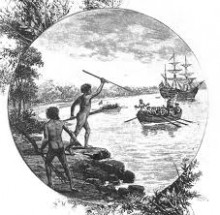 Here is an excellent description of how colonialism impacted upon a young Aboriginal Australian as summarised by Richard Broome in his seminal book Aboriginal Australians: A history since 1788.
Here is an excellent description of how colonialism impacted upon a young Aboriginal Australian as summarised by Richard Broome in his seminal book Aboriginal Australians: A history since 1788.
‘In Dareton, new South Wales, In 1965, eleven-year-old Malcolm Smith and his brother ‘borrowed’ pushbikes leaning against a bus shelter and went joy-riding. This small act led to the involvement of the police, welfare officers and the court.
Malcolm’s widowed father, who was in seasonal work and thus not always present, was judged as an unfit parent. The boys were taken and placed in a series of homes and foster care placements, where their Aboriginality was undermined, even denigrated.

 The aim of the
The aim of the 



